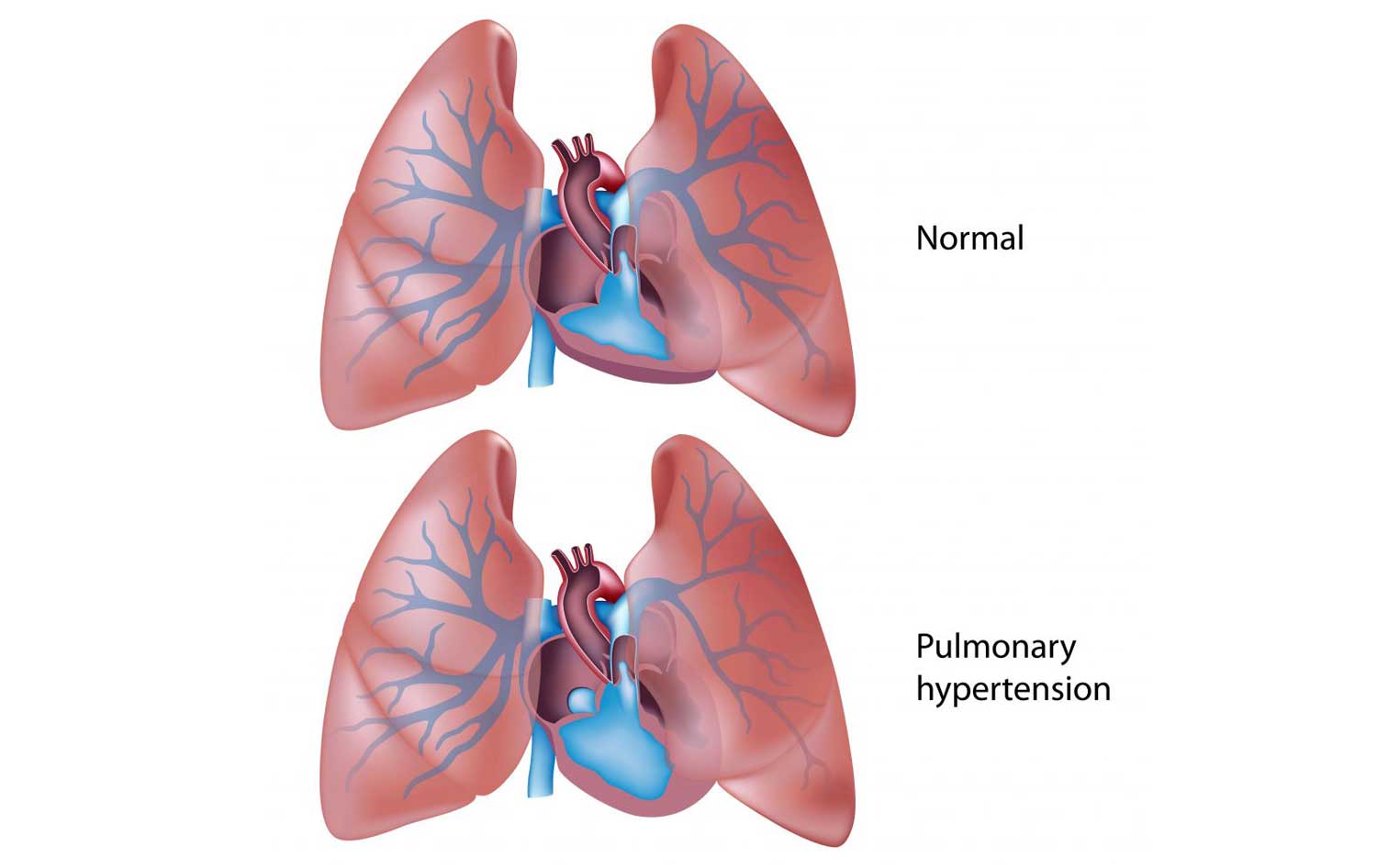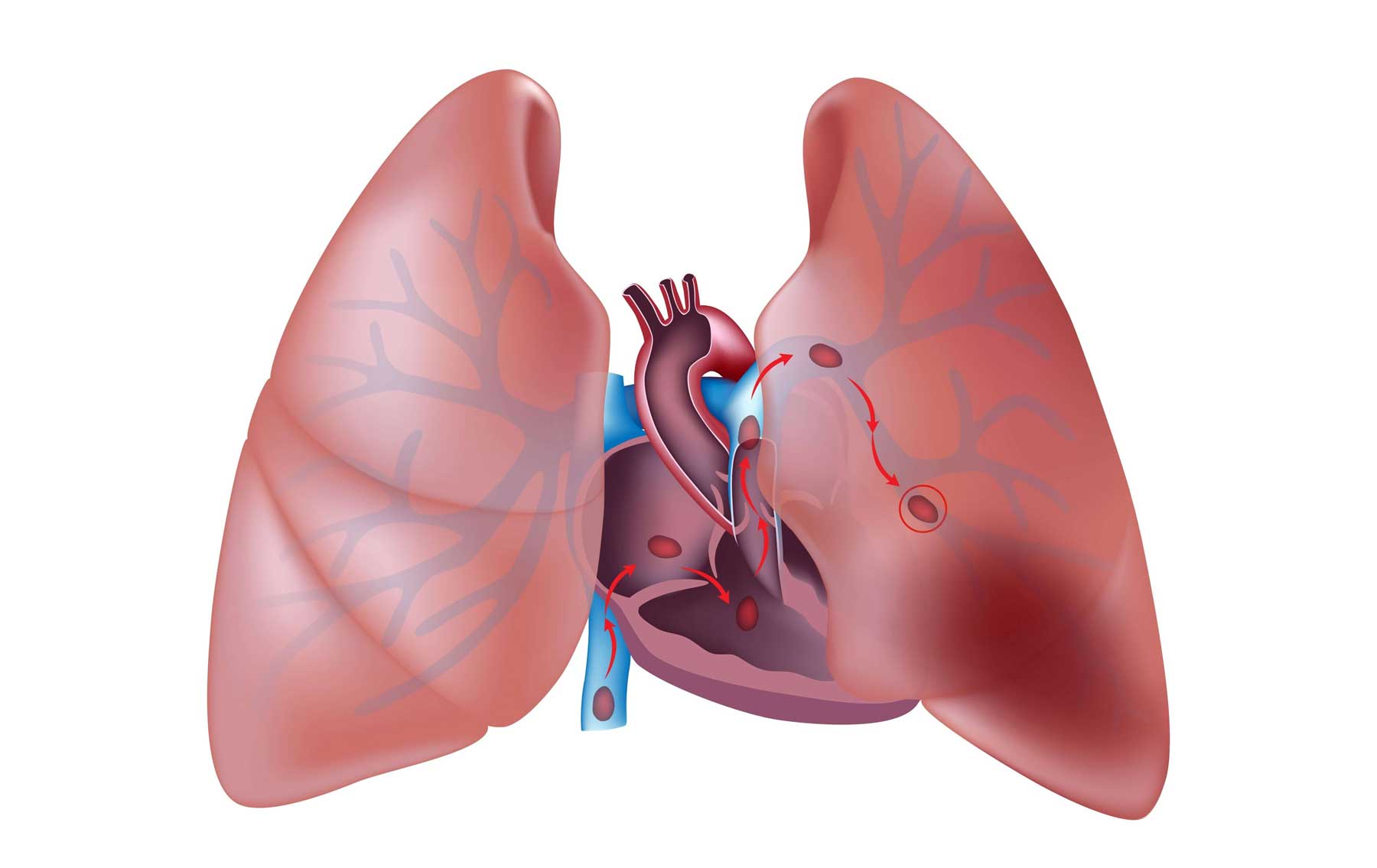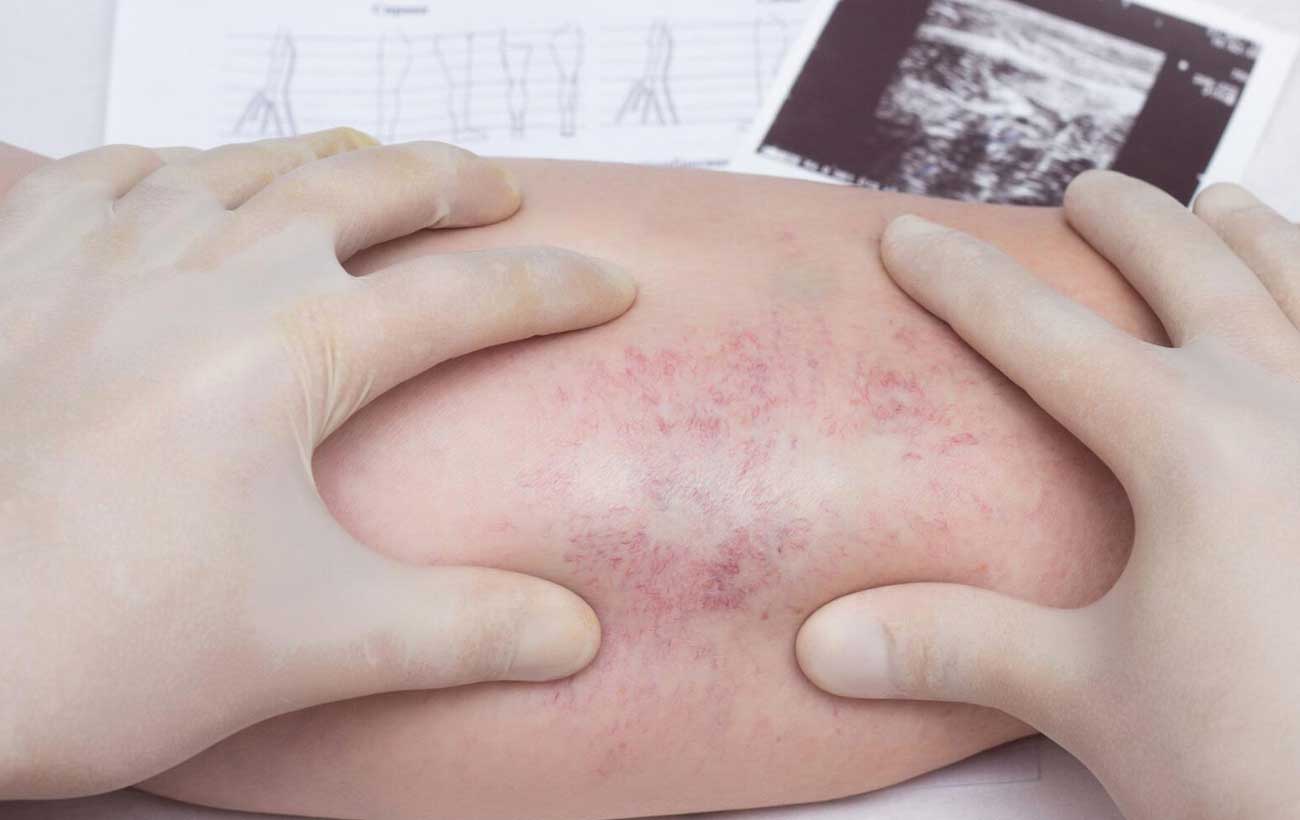Deep Vein Thrombosis Thrombosis is the formation of a blood clot (thrombus), which can partially…

Pulmonary hypertension is elevated blood pressure in the lungs. The disorder can result from any disease that blocks the flow of blood or oxygen through the lungs, such as congenital (present at birth) heart disease, chronic bronchitis, and emphysema. People who live for many years at high altitudes have an increased risk of pulmonary hypertension. Whatever the cause, the main result is increased pressure inside the pulmonary arteries. Over time, this pressure leads to thickening of the arteries, which obstructs blood flow. In an attempt to compensate for poor circulation, the right side of the heart becomes enlarged. The increased workload can eventually cause heart failure. Women are five times more likely than men to develop pulmonary hypertension.
Symptoms
Pulmonary hypertension often causes no symptoms until the condition is advanced, when the main symptom is swollen ankles. Your skin may have a bluish tinge because your blood does not contain enough oxygen. The low oxygen content of the blood stimulates the production of more red blood cells, a condition called polycythemia. As the number of red cells increases, the blood becomes thicker and harder to push through the small blood vessels in the lungs, further increasing blood pressure in the pulmonary arteries and decreasing the volume of blood pumped by the heart. If you already have shortness of breath because of underlying lung disease, pulmonary hypertension is likely to make breathing even more difficult. You also may experience other symptoms of heart failure, such as fatigue.
Treatments
Treatment of pulmonary hypertension depends on the underlying disorder that is causing it. Daily home treatment with oxygen (which reduces spasms in the pulmonary arteries) sometimes helps lower pulmonary blood pressure. If pulmonary hypertension is caused by chronic lung disease, the goal of long-term treatment is to stop further deterioration of the lungs. Your doctor may prescribe antibiotics and will make sure you get yearly flu shots and a vaccination against pneumonia every 5 to 7 years to help prevent chest infections.
Heart failure caused by pulmonary hypertension can be relieved with rest and treatment with oxygen and diuretics (which eliminate excess fluid from the body). In some cases, vasodilator drugs are effective in reducing blood pressure in the pulmonary arteries by widening the blood vessels.
People who have pulmonary hypertension and progressive heart and lung disease can be treated successfully with a heart and lung transplant or, if the heart has not been damaged, a lung transplant. Major surgery of this kind carries substantial risks and is performed only after all other treatments have been unsuccessful.



